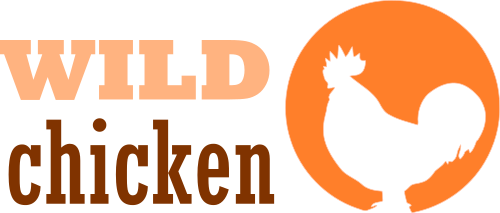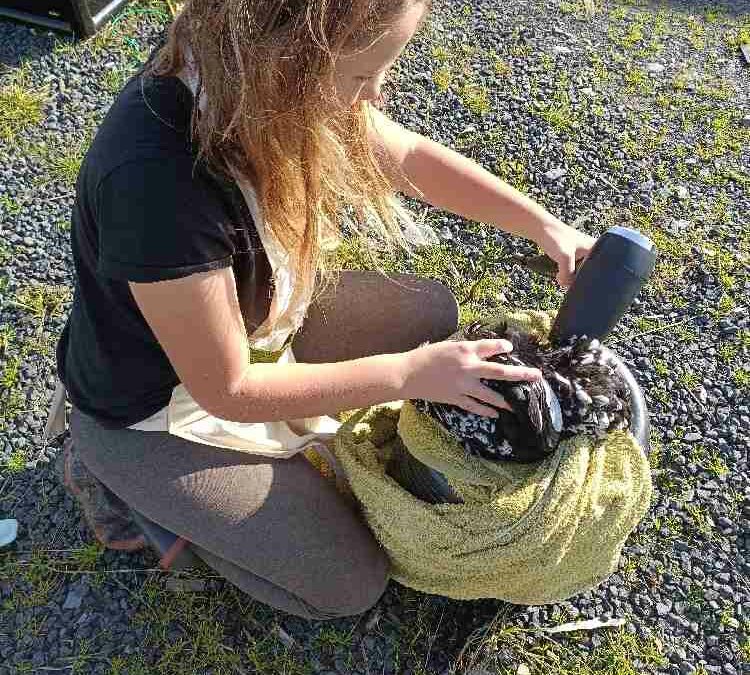If you’re into exhibition poultry you’re inevitably going to need to wash your birds at some point, depending on the breed and variety that might be once in a while or that might be before each and every show.
So if you’re wondering why, when, or how to wash your birds then this article is for you.
Do my chickens need to be washed?
Generally speaking, yes, but there are exceptions to this rule:
Ideally hard feathered fowl wouldn’t be washed as it can make the feathers too soft, if you must wash them then do it a while before the show.
Usually a damp silk cloth is sufficient enough for hard feathered fowl, especially dark colours.
Anything that has been kept in a clean dry coop – as long as the bird is in good clean condition – won’t need to be washed.
The following will need to be washed:
Whites will always look better after a good wash.
Feather-legged birds need, at the very least, spot cleaned, but usually they do better with a good washing.
Heavily feathered birds, especially ones kept in dirty coops.
Birds with crests and/or muffs and a beard will need at the very least, spot cleaned.
Long tailed males will need at the very least, spot cleaned.
Pretty much, any bird in dirty condition will definitely need to be washed.
When should I wash my fowl?
Hard feathered fowl should be washed at least one week before the show.
Heavily feathered fowl (eg; cochin) should be washed at least three days before the show.
Medium feathers fowl (eg; leghorn) should be washed at least two days before the show.
Large fowl need to be washed slightly earlier than bantams of the same breed.
How long does it take to wash each bird?
Always allow yourself plenty of time to wash each bird.
I find it takes at least an hour to wash my Pekin bantams, start to finish (finished drying).
There’s no set time as it depends on how dirty the bird is, how many feathers they have, how large the bird is, drying method, weather, etc.
The washing process
You will need:
Three tubs of warm (not hot!) water
A good soap or shampoo here are some good one’s:
Pet shampoo
Baby soap
Baby shampoo
Wool wash
What you don’t want:
Dish detergent or dish soap
Harsh soaps or shampoos
Towels
Toothbrush or soft nail brush
Combs
Glycerin (optional)
Blueing agent (optional, especially for whites)
Nail clippers and file
Toothpicks (especially for clean legged yellow shanked birds)
White vinegar
Hair dryer (optional)
Drying coops/clean coops for after the wash
NEVER WASH A BIRD WITH A FULL CROP.
I choose not to feed my birds the morning of the wash, they get fed while in the drying coops, if I have a lot of birds to wash them I may give them a small snack, especially the ones I’m washing last.
Tub one:
Your soap/shampoo of choice.
Clean warm water.
What to do:
Submerge the bird slowly, don’t let its head get in the water!
Gently massage the water into the feathers, wet the bird down to its skin, gently crumble the dirt off of any feathers that need it, be careful not to damage the feathers.
Scrub the shanks and feet.
Comb the feathers on the neck to remove the waxy coating from the feathers.
Once the bird is pleasing clean, lift it from the tub and gently squeeze the feathers out, be very careful not to break the feathers.
Move it to the second tub.
Tub two:
Clean warm water.
This is the first rinse tub.
What to do:
Slowly submerge the bird in the water, don’t let its head get in the water.
Gently massage the water into the feathers, make sure you rinse out as much soap as possible.
This is the only tub you can wash the head (but still keep it above the water), get your toothbrush or nail brush and give the face, comb, wattles, and earlobes a good scrub.
Remove the bird out of the water as you did for the first tub.
Tub three:
This is the second rinse tub.
Warm water.
White vinegar.
Blueing agent and glycerin (both optional)
Slowly submerge the bird in the water, don’t let its head get in the water.
Gently massage the water into the feathers, make sure you rinse out as much soap as possible.
This is the worst tub to get the head wet in, the vinegar will hurt the bird badly!
Remove the bird from the tub as you did in the first tub.
The drying process:
Wrap the bird in a towel and gently pat it dry, this is a good time to file or clip nails and beak, check that the bird is pleasingly clean, then dry completely with one of the following methods.
Method one: hair dryer
This is the fastest method, all you need is a hair dryer
What breeds does this work with?
Don’t use this on hard feather fowl, they turn out better when dried in the sun or before a fire.
Best used in fluffier breeds such as pekins, cochins, silkies, English orpington, etc.
Dry from tail to head in pekins to help the feathers lay right and help make them look rounder.
Dry head to tail in other breeds to get the feathers to lay right, blowing from tail to head will make the feathers stick up wrong, this method isn’t the best for breeds other than pekins.
For this method you must keep the hair dryer on a low setting and keep it moving so as to not burn the skin, the slower the bird dries the better.
For pekins you start at the cushion blowing against the lay of the feathers (hair dryer facing towards the head), once the cushion is almost dry, start on the back, then the hackles, then the wings and under parts of the bird, then do the whole bird over again to completely dry it.
For other breeds you start at the hackles with the hair dryer facing the same way as the feathers, do not blow against the “grain” of the feathers. Otherwise the process is the same as for pekins.
After the bird is completely dry, place it in a clean dry coop with good ventilation but no drafts.
Method two: sun dried
This method works well for all breeds, and is the ideal method for hard or tight feathered fowl.
You can either dry in the sun or if it’s a cold cloudy day then you can dry them before a fire or under heat lamps, make sure they aren’t too close or too far from the heat source.
Make sure your birds have feed and water at all times while in the drying coops.
This is the easiest method, all you need to do is put them in the pens before a heat source or in the sun.
If drying in the sun then it’s best that the pen has 3 solid sides to prevent draft, the open side should be angled towards the sun, the bottom of the pen should either be on grass or solid with clean bedding, old feed sacks or cardboard can be used to add sides or a floor.
If drying before a fire any box works as long as it has plenty of ventilation and minimal drafts, depending on how hot your fire is you will need to keep them 1.5 to 2 ish meters away from the fire.
If drying under heat lamps you will need a box with a wire top, otherwise as long as it has plenty of ventilation and minimal drafts and clean bedding, it’ll work.
Method three: sun and then hair dryer.
This method is not for hard feathered fowl, but is exelent for other breeds.
This is my preferred method for my pekins, as it gives me the best of both worlds, I can take the bird from the wash tub, place it in a drying coop, wash the next bird, then after I’m done washing I can blow dry them so that it comes night time there all dry and in training pens.
Follow the drying method in method two then blow dry them as in method one.
After the bird is dry then place it in a training pen with clean bedding, remove droppings as often as possible.
Why add Glycerin and a Bluing agent?
Glycerin: helps replace the natural oils in the feathers that can get removed in the first tub, helps make the feathers web out softer, I have been told that glycerin works in hard feathered fowl and not soft feathered fowl, I’m not sure if this is 100% or not so I would test it on non show birds first to see if it works for your breed.
Bluing agent: in small quantities it helps make white birds more white, don’t go overboard as it will dye your birds blue or purple, there are plenty of options such as: laundry Bluing, blond hair shampoo, etc, again, make sure you wash a non show birds before you attempt to wash a show bird.
last minute preparations
The last minute preparations are just as important as the bathing process, these include things such as running a silk cloth over the bird, applying oil, petroleum jelly, comb dressing etc to the comb, face, wattles, ear lobes, and shanks, trimming the beak and nails, and much more. For more information on last minute preparations click here.
Conclusion
The washing process is more an art than a science, so go ahead and play around a little, everyone does it a little differently. I always suggest that you wash a normal bird before attempting your show birds so as to avoid too many mistakes.
So get out there and wash your fowl, have fun and good luck!

